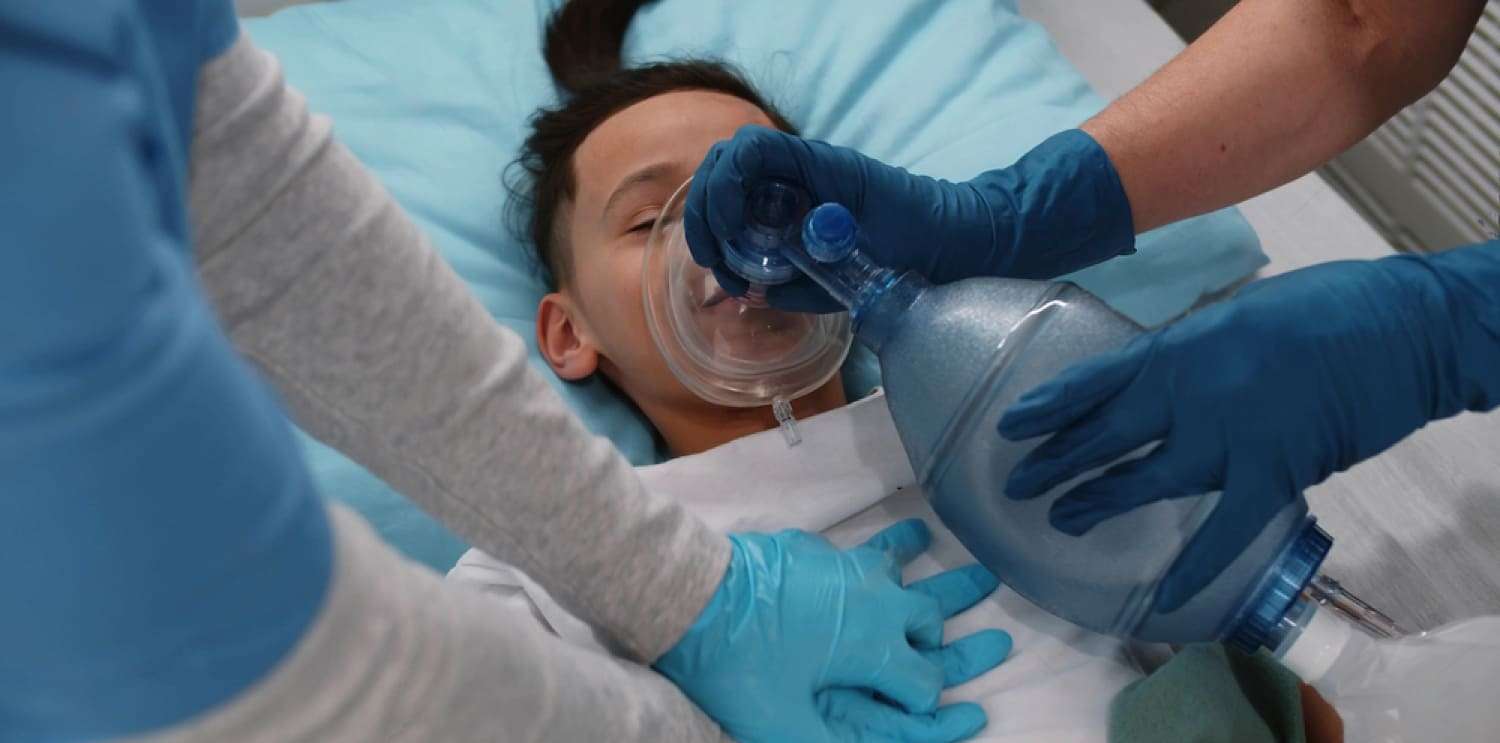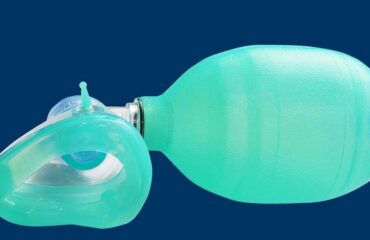Manual resuscitators, also known as bag valve masks (BVMs), are medical devices used to provide positive pressure ventilation to individuals who are not breathing or not breathing adequately. These devices are crucial in emergency situations, such as cardiac arrest or respiratory failure, where immediate intervention is required to maintain oxygenation and ventilation until more definitive measures can be taken.

Components of a Manual Resuscitator
- Self-Inflating Bag: The main component that can be squeezed to deliver air or oxygen to the patient’s lungs.
- Valve System: Ensures one-way flow of air or oxygen into the patient’s lungs and prevents exhaled air from re-entering the bag.
- Mask: Fits over the patient’s nose and mouth to create a seal and deliver the air or oxygen from the bag into the patient’s airways.
- Oxygen Reservoir: Some BVMs come with an oxygen reservoir to allow the delivery of higher concentrations of oxygen.
- Oxygen Inlet: Allows attachment to an external oxygen supply for enriched oxygen delivery.
Uses of Manual Resuscitators
- Cardiac Arrest: To provide ventilation during cardiopulmonary resuscitation (CPR).
- Respiratory Arrest: In cases where the patient has stopped breathing.
- During Anesthesia: As a backup device in case of failure of mechanical ventilators.
- Transport: To maintain ventilation in patients being moved within or between medical facilities.
Operation
- Positioning: Ensure the patient is on their back with their airway open, typically by tilting the head back and lifting the chin.
- Mask Application: Place the mask over the patient’s nose and mouth, ensuring a tight seal.
- Bag Compression: Squeeze the bag to deliver air or oxygen to the patient’s lungs. Release to allow the bag to self-inflate and the patient to exhale.
- Rate and Volume: Typically, adults require around 10-12 breaths per minute, with each squeeze lasting about 1 second. Adjustments are made based on patient response and condition.
Benefits
Immediate Use: Does not require electricity or batteries, making it reliable in various settings.
Portability: Lightweight and easy to transport.
Ease of Use: Can be used by trained professionals and, in some cases, by trained laypersons in emergencies.
Limitations
Skill Required: Effective use requires training to ensure proper ventilation and avoid complications such as gastric insufflation or barotrauma.
Limited Automation: Unlike mechanical ventilators, BVMs require continuous manual operation.
Manual resuscitators are essential tools in emergency medical care, providing critical support in life-threatening situations where immediate intervention is necessary to sustain life.
Manual resuscitation in India: its importance
Manual resuscitators, or Ambu bag play a crucial role in the medical infrastructure of India due to several factors related to the country’s healthcare system and demographic challenges. Here are key points highlighting their importance:
Emergency Response in Remote Areas
- Limited Access to Advanced Care: Many rural and remote areas in India lack access to advanced medical facilities and mechanical ventilators. BVMs provide an essential means of immediate life-saving ventilation.
- Portability: BVMs are portable and can be easily transported to remote locations, making them vital for emergency response teams and during patient transport.
Disaster Response and Mass Casualty Events
- Natural Disasters: India is prone to natural disasters such as earthquakes, floods, and cyclones. In such scenarios, BVMs are indispensable for providing respiratory support when infrastructure is damaged.
- Mass Casualty Situations: In events with multiple casualties, the simplicity and effectiveness of BVMs enable first responders to provide immediate care to numerous victims simultaneously.
Resource-Limited Settings
- Cost-Effective: BVMs are significantly more affordable compared to mechanical ventilators, making them a practical choice for many healthcare facilities with limited budgets.
- No Power Requirement: BVMs do not require electricity, which is crucial in areas with unstable power supply or during power outages.
Training and Education
- Training Tool: BVMs are often used in medical training programs for teaching basic life support (BLS) and advanced cardiac life support (ACLS). This widespread training is vital for increasing the number of healthcare providers skilled in emergency ventilation.
- Community Training: Initiatives to train non-medical personnel, including community health workers and laypersons, in the use of BVMs can enhance emergency preparedness and response capabilities at the community level.
High Prevalence of Respiratory Conditions
- Respiratory Diseases: India has a high burden of respiratory diseases, including asthma, chronic obstructive pulmonary disease (COPD), and tuberculosis. BVMs are essential in managing acute exacerbations and respiratory distress in these patients.
- Neonatal Care: BVMs are crucial in neonatal resuscitation, particularly in areas with high birth rates and limited neonatal intensive care units (NICUs).
Supplement to Mechanical Ventilation
- Backup Option: In well-equipped hospitals, BVMs serve as a backup option in case of mechanical ventilator failure or during transport within the hospital.
- Pre-Hospital Care: Ambulances and emergency medical services (EMS) use BVMs to provide ventilation to patients en route to the hospital, ensuring continuous care during transit.
Conclusion
Manual resuscitators are indispensable in India’s healthcare landscape due to their versatility, cost-effectiveness, and ease of use. They bridge critical gaps in emergency care, especially in resource-limited and remote settings, and play a vital role in improving survival outcomes during medical emergencies, disasters, and everyday medical care. Expanding training and ensuring the availability of BVMs across the country can significantly enhance the capacity to manage respiratory emergencies and save lives.

